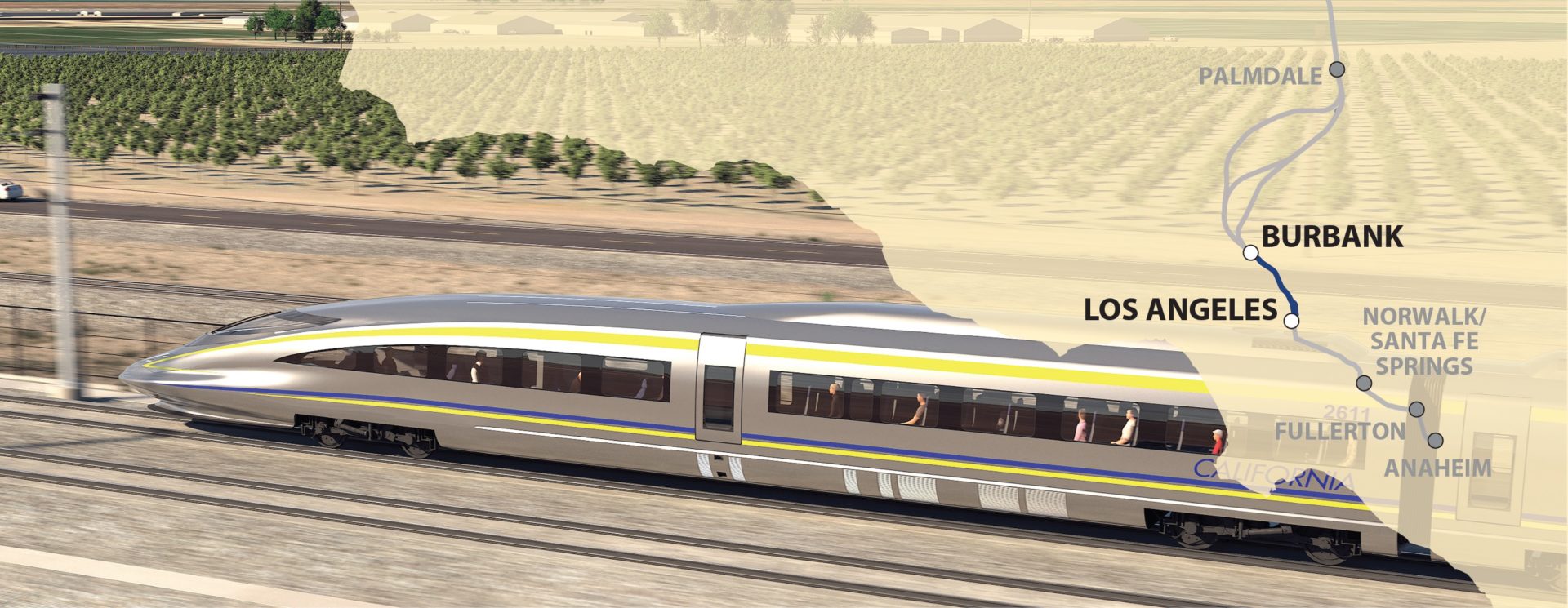California High-Speed Rail Authority (Authority) Board of Directors has approved a 90-mile section between San Jose and Merced in California, and signed off on the plans and environmental clearance for the rail line extension, which they estimated would become operational by 2031.
The extension project is intended to provide a bullet train line which will establish a connection between Northern and Southern California. This project is quite novel, as it is the first time the HRS board has made plans to extend train tracks to a coastal region. The new high-speed rail line is expected to connect Central Valley, a low-income region with affordable housing to Silicon Valley, a coastal region with higher-paying tech jobs.
This newly approved segment of the California High-Speed Rail project is part of the 500-mile Phase 1 rail development, intended to connect San Francisco and Los Angeles. According to the officials, the newly added Silicon Valley extension means that the first phase of the project has now gotten approval for nearly 400 miles.
Ongoing construction of the California High-Speed Rail extension project is taking place along 119 miles in the Central Valley at 35 active job sites and the project also covers modernizing and electrifying an already existing rail corridor located between San Jose and Gilroy, which will allow for the bullet rail line and Caltrans services.
A former chairman of the Rail Authority Board, Dan Richard said the California High-Speed Rail line would reduce the travel time for riders between Fresno and San Jose to about an hour, for a journey that would normally take three hours by car. He also added that the rail line extension would help to address the job and housing mismatch between disparate regions in California.
Sam Liccardo, the Mayor of San Jose described the California High-Speed Rail line, as a critically important project which would help the state expand economic opportunity and affordable housing, and he pointed out that these were important goals for the state.
Project overview
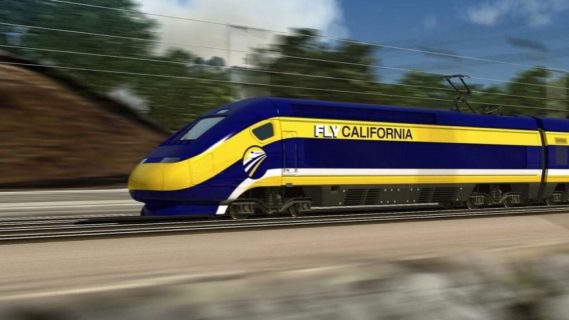
The California High-Speed Rail (CHSR) is a publicly funded high-speed rail system that is under construction in the U.S. state of California to connect the Anaheim Regional Transportation Intermodal Center in Anaheim and Union Station in Downtown Los Angeles with the Salesforce Transit Center in San Francisco via the Central Valley, a distance of 612 km.
The project the cost of which is US$ 84bn+, making it the most expensive railway project ever to be carried out in the North American country, is planned to eventually be extended to Sacramento and San Diego.
Construction kicked off in 2015, and the first phase is expected to have passengers moving in 2025, with subsequent portions opening in 2029. California High-Speed Rail Authority (CHSRA) will operate the system which will be dedicated, grade-separated tracks with speeds of up to 354 km/h.
Project Timeline
2015
Construction of the CHSR project kicked off
The construction of the CHSR project kicked off with the first phase of the project expected to have passengers moving in 2025, and subsequent portions in 2029.
2018
CHSRA pushed the estimated costs of the project and delayed the initial service
CHSRA pushed estimated costs of the project to between US$ 63.2bn and US$ 98.1bn (YOE)., and delayed initial service to 2029, with Los Angeles to San Francisco service in 2033.
However, the agency said that the environment reviews for the entire San Francisco to Anaheim route would continue.
Jan 2020
California approves of US$1.6Bn bullet train
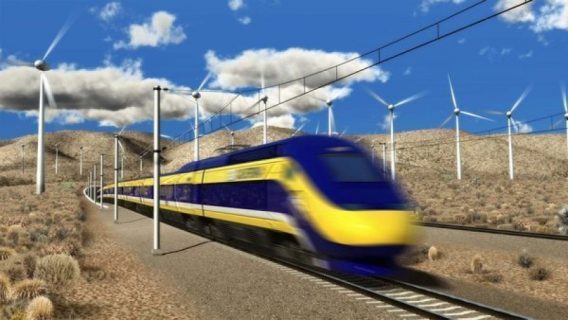
The California High-Speed Rail Authority is going forward with a potential $1.6 billion Request for Proposals process for a 30-year track and systems contract for the beleaguered and scaled-back Northern-to-Southern California bullet train project, despite previous objections from the Federal Railroad Administration.
The authority issued the request to three design-build groups on Dec. 19, one day after the California High-Speed Railway Authority CEO Brian Kelly said it received the FRA’s letter stating it would not approve the RFP as written. The administration raised more than one objection to the authority’s plans to issue such a large contract when it was still, according to the Federal Railroad Administration, still struggling with delays related to ongoing construction and had failed to demonstrate funding commitments for the new work.
Kelly stated before the board members that the authority would reach out to the FRA to look into its concerns and discuss potential RFP changes, which mainly pertained to technical elements.
Also Read: Virgin US$4.8Bn Bullet train construction to start in 2020.
Further info about the project:
The Northern-to-Southern California bullet train will have a total cost of US$77 billion. However, soon after the Governor of California, Gavin Newsom took office last year, he temporarily put away all but the 119-mile, $10.6 billion part of the route between Bakersfield and Merced.
The current firms that are running for the project are The Weitz Company LLC, Bombardier Transportation (Global Holding) UK Limited, Fluor Enterprises Inc., and Balfour Beatty Infrastructure Inc, among several others.
The track is expected to cover future tracks from San Jose to Bakersfield, more than half the proposed Los Angeles-to-San Francisco system. The bullet train project obtained two grants previously during the Obama administration for a total of about $3.5 billion. In early 2019, the U.S. Department of Transportation ended a 2010 grant for $929 million that had not been spent. Under the federal grants, the state has to complete 119 miles of rail structures and install the tracks in the Central Valley by 2022, but there is no requirement for electrical power, signals or a maintenance facility.
March 2020
CHSRA released Draft Environmental Impact Report for the projects Bakersfield to Palmdale section
The CHSRA has just released the first Draft Environmental Impact Report for the California High-Speed Rail (CHSR) project. The document, which covers the 80-mile stretch of the project from Bakersfield to Palmdale, will be open for public comment starting on Friday, February 28th.
The Bakersfield to Palmdale Project Section will provide a connection from the Central Valley to the Antelope Valley and Los Angeles County, closing the existing passenger rail gap between Northern and Southern California through the Tehachapi Mountains, as well as providing new opportunities for economic development and revitalization in the cities along this corridor.
Attainment of environmental clearance on schedule
The approximately 80-mile project section will travel through or near the communities of Bakersfield, Edison, Tehachapi, Rosamond, Lancaster, and Palmdale with stations in Bakersfield and Palmdale.
The approved Bakersfield Station and the proposed Palmdale Station would maximize ridership, work in coordination with local land use planning and provide multi-modal transportation options, including a potential connection with Brightline Trains in Palmdale. With the release of this Bakersfield to Palmdale Draft Environmental Impact Report/Environmental Impact Statement (EIR/EIS), the Authority remains on track to complete environmental clearance for the full Phase 1 system by the federally mandated 2022 deadline.
From Friday, February 28, 2020, through Friday, April 13, 2020, the Bakersfield to Palmdale Project Section Draft EIR/EIS is available for a 45-day CEQA and NEPA review and public comment period. In conjunction with the public review period for the document, the Authority will hold a public hearing to take public comment.
Comments received regarding environmental issues will be reviewed and responded to as required by law. The final EIR/EIS document for Bakersfield to Palmdale will be issued in 2021.
Feb 2021
Section of California high-speed train faces US$800 Mn overrun
A section of the California high-speed train through the San Joaquin Valley has stumbled upon yet another troubling and costly hurdle in the project after a contractor gave assurances that it could be constructed at a much cheaper price with radical design changes. The segment runs across rivers, migratory paths for endangered species, and an ancient lake bed through the length of Kings County, a fertile agricultural belt south of Fresno.
In 2014, when the California High-Speed Rail Authority awarded the contract, it went with the lowest bidder, Dragados, a Spanish company that promised US$300 million in cost savings by altering the design that the authority had proposed to regulators. Seven years later, these changes have been largely abandoned and have contributed to more than US$800 million in cost overruns on the Kings County section.
Also Read: California high-speed rail construction deadline postponed further
In addition, the California High-Speed Rail Authority awarded the contract without first completing a scientific assessment of how sinking land in the area; a result of decades of excessive groundwater pumping, could affect the rail route. The state is currently paying tens of millions of dollars to raise track embankments over 21 miles.
Today, Dragados has not started construction on about half of its bridges and viaducts, four years after the original deadline of 2017, and it had completed less than 50% of its planned work by December, according to rail authority progress reports. The rail authority bears a share of responsibility, having failed to deliver 278 of 998 parcel land purchases needed for construction.
California’s high-speed rail endeavour still has support from Governor Gavin Newsom and other state leaders, who hope it will ultimately relieve congested airports, spur economic development in the Central Valley and provide a cleaner alternative for linking the Bay Area, the Central Valley, and Southern California. But with continued cost increases and delays, the project potentially could run out of money before an initial 171-mile line from Merced to Bakersfield is completed. The Dragados segment, which is part of that initial line, is just part of the problem.
The State of California asked for an extension to the deadline of the project
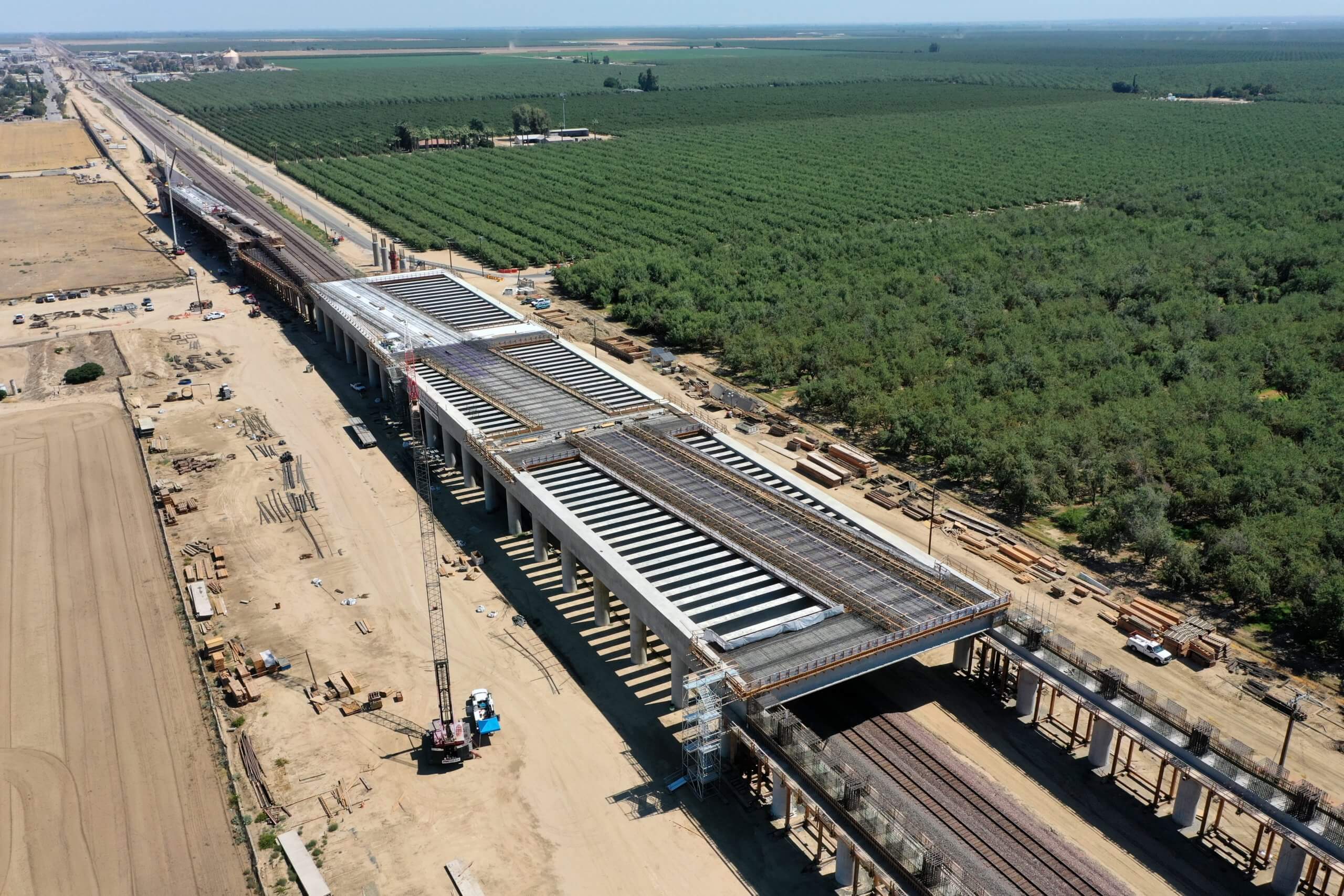
The state of California announced that they would need to postpone the construction deadline for the high-speed rail project by asking the Biden administration for a one-year extension on completing construction on a section of track in the Central Valley.
The state now expects to complete construction on a 119-mile segment of track from Bakersfield to Madera in the Central Valley by 2023.
A portion of the funds is tied to meeting a federal 2022 deadline, prompting the request for an extension. The budget for that segment of track is expected to jump from US$ 12.4bn to US$ 13.8bn according to Brian Kelly, the project’s chief executive officer.
April 2021
California bullet train project faces further possible delays
The California bullet train project has announced that they are expecting the date of completion to be pushed to at least April of 2025 for the 65-mile section of the line in Kings County, nearly two years after the date the state included in a business plan adopted last week.
It’s yet another setback for the project that’s been mired in pushed deadlines and cost overruns for a project that voters in 2008 approved; a bond for the rail line, eventually aimed at connecting Los Angeles to San Francisco. The newest problem could again further increase costs and jeopardize the state’s funding plan to complete a partial operating system between Bakersfield and Merced by 2030.
Also Read: Aramis Solar Energy Generation and Storage project given green, California
A letter from a construction team headed by the Spanish firm Dragados notifying the California High-Speed Rail Authority of the latest delay for the planned bullet train stated a complaint that the rail authority’s failure to accurately predict land acquisition has tangled construction schedules and caused fitful conditions along the route.
Dragados said it has had to hire workers as land becomes available and then lay them off as it awaits new parcels. It said that “trepidation” among subcontractors and suppliers is resulting in a higher risk that must be priced into bids for work.
Joe Hedges, the chief operating officer at the rail authority, downplayed the letter in an interview with a local newspaper. He called it part of a back-and-forth bargaining process normal in the construction industry. “The completion date of 2025 is subject to negotiation and the delays can be mitigated,” he said.
The chief operating officer also disputed Dragados’ complaints about faulty state land forecasts. Land acquisition has been a monumental hurdle for the project since 2012. In Kings County, the rail authority still needs 264 more parcels, but in January it acquired only nine. At that rate of progress, it would take 2½ years just to buy the land.
CHSRA appeals for a US$ 4.1bn bond to fund the completion of the 119 miles of track in the Central Valley
The California High-Speed Rail Authority presented the latest change on how to pay for the project; using bond money. The authority appealed for US$ 4.1bn to fund the completion of the 119 miles of track in the Central Valley.
The changes to the project’s business and funding plan will now go to a peer review group and state lawmakers for approval. The rail authority’s board voted to advance the new business and funding plan with the understanding that it must go through multiple other reviews and public comments.
Voters in 2008 approved a nearly US$ 10bn bond, with most of the money dedicated to “establish high-speed train service linking Southern California counties, the Sacramento/San Joaquin Valley and the San Francisco Bay Area.”, but rail officials now want to take most of what’s left, about US$ 4.1bn, to finish the 119-mile segment of track from Madera to Bakersfield.
That segment will run and test trains until a larger, 171-mile track is completed for passenger service from Bakersfield to Merced. Trains aren’t expected to be in service for passenger use until 2029.
Stuart Flashman, a lawyer in several cases against the project, however, stated that spending the rest of the money on the 119-mile segment of track in the Central Valley did not meet the original aims of the bond.
“Both the funding plan and the business plan continue to double down on the board’s decisions to build a part of a Central Valley segment that is still not going to be a usable segment,” said Flashman.
Brian Kelly, the project’s chief executive officer, on the other hand, said that there was no question that they were hit, but it was important to note, “especially when you see the impacts of COVID-19 on the economy and jobs broadly, that this enterprise is creating jobs.”
July 2021
New plans unveiled for the San Francisco to San Jose section
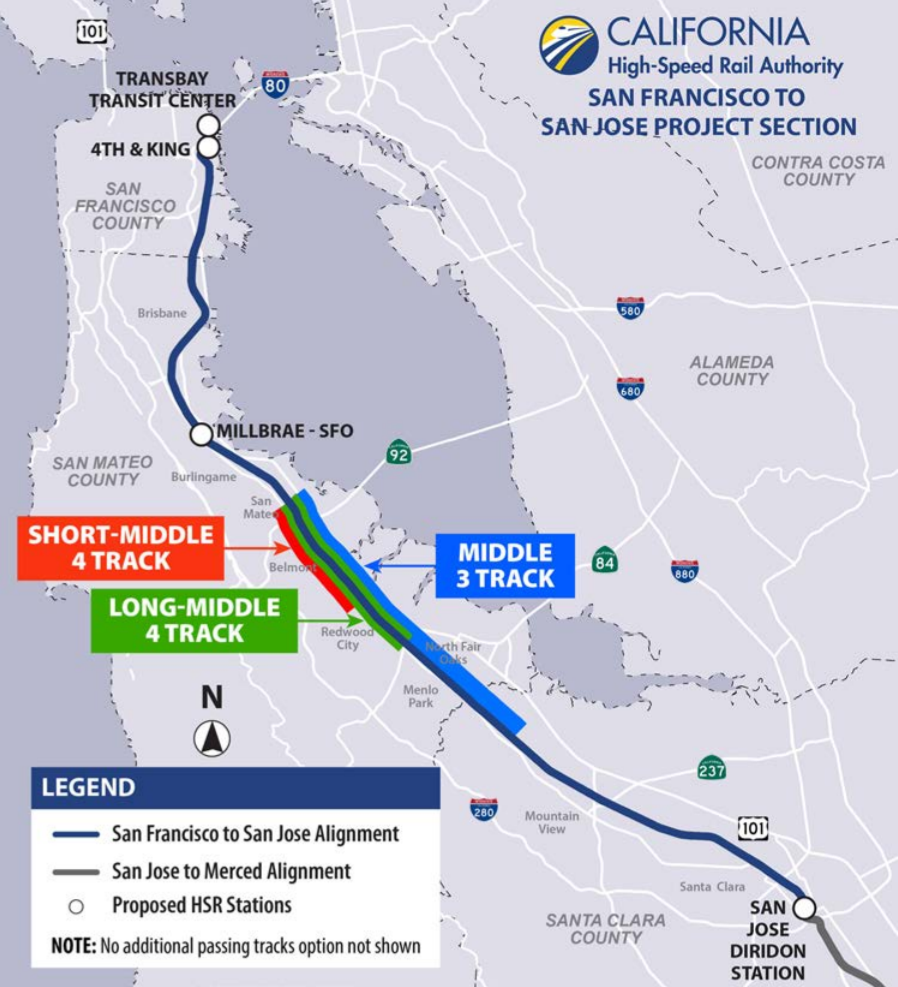
New, revised California high-speed rail plans were unveiled particularly for the San Francisco to San Jose section. The revision included changes to the Millbrae station and the reconfiguration of various areas along with the infrastructure.
After this project, the section began moving toward construction, and the environmental process began to study and identify the infrastructure needed on top of the electrification to add high-speed rail service in the corridor, as well as including safety modifications.
In the summer of 2020, the CHSRA published its draft environmental document for this project section looking at the needed infrastructure and modifications at the Millbrae station. However, after receiving the stakeholders’ feedback and concerns, the authority looked at another option called the Millbrae Station Reduced Site Plan Design Variant or RSP Design Variant.
The RSP Design Variant preserves the design of the high-speed rail tracks and platforms but reconfigures station facilities, parking, and station access. This will reportedly reduce impacts on existing and planned development and reduce the footprint on the west side of the station.
It differs from the design of the Millbrae Station evaluated in the previous draft, by eliminating surface parking lots on the west side of the alignment that would have served as replacement parking for displaced Caltrain and Bay Area Rapid Transit parking spaces, relocating the new high-speed rail station entrance hall, eliminating the California Drive extension north of Linden Avenue to El Camino Real and eliminating lane modifications to El Camino Real from the project.
Dec 2021
The court ruled that the project’s construction plan was not violating the state constitution.
A lawsuit that was meant to stop California’s high-speed rail scheme was again turned down in a state court, with the 3rd District Court of Appeals in Sacramento ruling the scheme’s segmented construction plan did not violate the state constitution.
The suit alleged that the scheme violated portions of the 2008 bond act to fund development that stated the money would be spent only for segments “ready and suitable for high-speed train operation,” because some money was being used on bits of the system that will be shared with conventional rail operations in Southern California and the Bay Area.
March 2022
CHSR Project receives approvals for the 14-mile Burbank to Los Angeles section
California High-Speed Rail (CHSR) Project has received approval for the Final Environmental Impact Report/Environmental Impact Statement (EIR/EIS) for the approximately 14-mile Burbank to Los Angeles section. The section is a part of the first phase (San Francisco to Los Angeles/Anaheim) and received unanimous approval from the California High-Speed Rail Authority (CHSRA) Board of Directors.
The EIR/EIS reportedly analyzed a broad range of potential impacts during the construction and final operations phase of the system. These include transportation, public utilities, air quality, noise and vibration, safety, equity, parks, aesthetics, and cultural resources, among many others. The Authority’s team also studied local plans to look at existing and planned facilities that might be impacted.
The board is now set to assess the final environmental documents for the San Jose to Merced, and San Francisco to San Jose sections in April and June of 2022, respectively. That would leave the environmental clearance of two segments on the entire phase remaining. These segments are Palmdale-to-Burbank and L.A.-to-Anaheim.
Setting new milestones
The board’s actions mark new milestones for the CHSR Project. On the one hand, it marks the second certification of an environmental document in the Southern California region and the first in the Los Angeles Basin.
Speaking on the new achievement, CHSRA CEO Brian Kelly said, “Today’s approval represents a historic milestone, and brings us closer to providing the first high-speed rail system in the United States. “We appreciate the continued support and collaboration with local and regional agencies and stakeholders as we work together to improve transportation in California.”
The Burbank to Los Angeles section will connect the high-speed rail system from a new Hollywood Burbank Airport Station to the existing Los Angeles Union Station, providing an additional link between Downtown Los Angeles and the San Fernando Valley. The alignment for this project will primarily use the existing railroad right-of-way adjacent to the Los Angeles River through the cities of Burbank, Glendale, and Los Angeles.
April 2023
Project Progressing
Construction is underway for California High-Speed Rail (CHSR), a project set to open in 2030. The rail line will span 171 miles from Merced to Bakersfield, reaching speeds of up to 220 mph.
By integrating improvements to commuter rail lines at both ends, the goal is to enable high-speed trains to complete the 350-mile journey between Los Angeles and San Francisco in just two hours and 40 minutes.
CHSR has faced challenges since its proposal in 1996, including route disagreements, management issues, delays in land acquisition and construction, cost overruns, and insufficient funding.
Despite these obstacles, the project is expected to bring economic benefits, reduce pollution and congestion, and already employs around 10,000 people.
The estimated cost ranges from $63 billion to $98 billion, connecting six of California’s largest cities and providing equivalent capacity to 4,200 miles of new highway lanes, 91 additional airport gates, and two new airport runways, which would cost between $122 billion and $199 billion.
With California’s projected population growth to over 45 million by 2050, high-speed rail is seen as a valuable solution to prevent the state from becoming overwhelmed by pollution and traffic.
